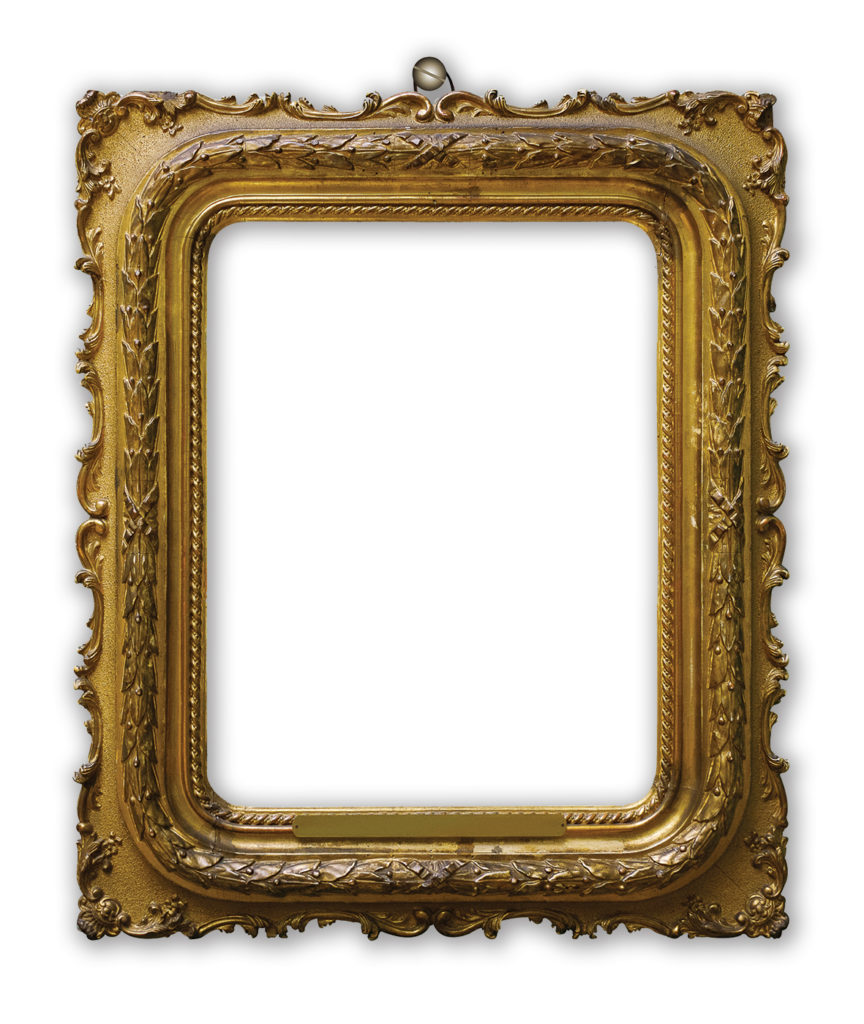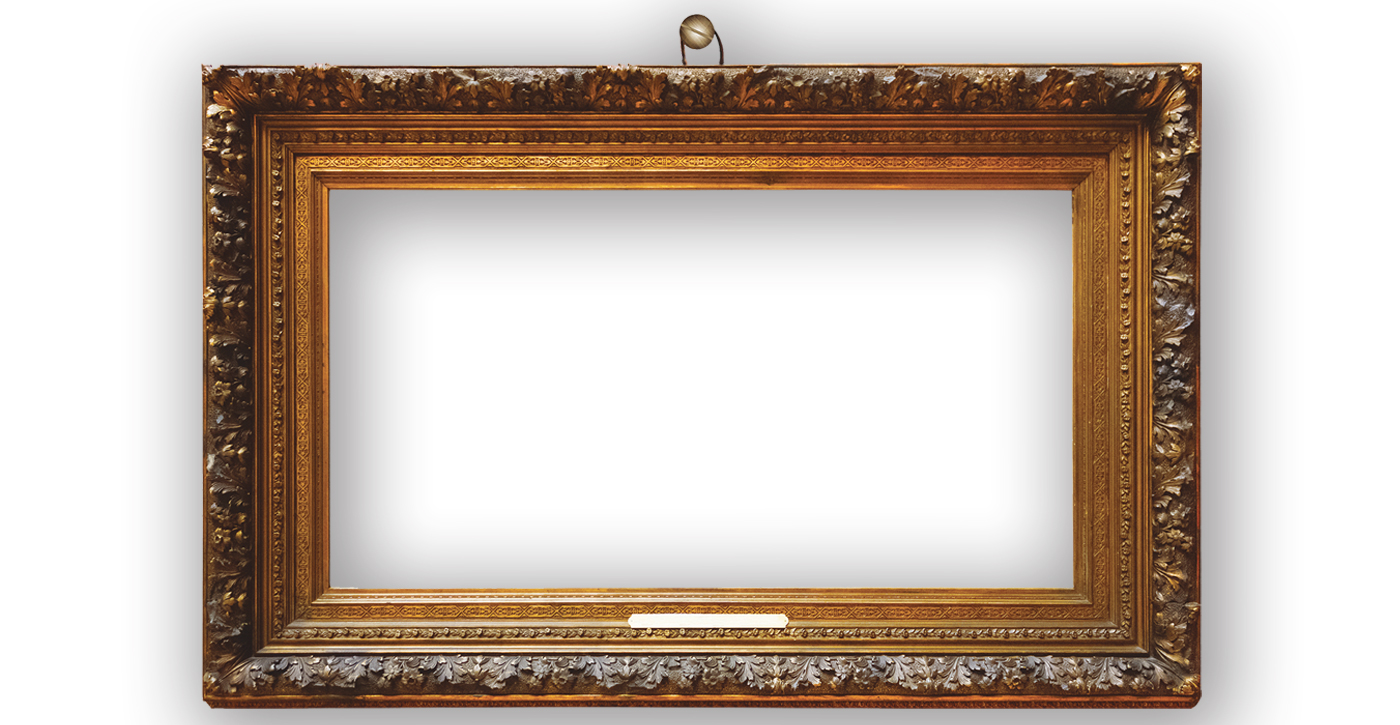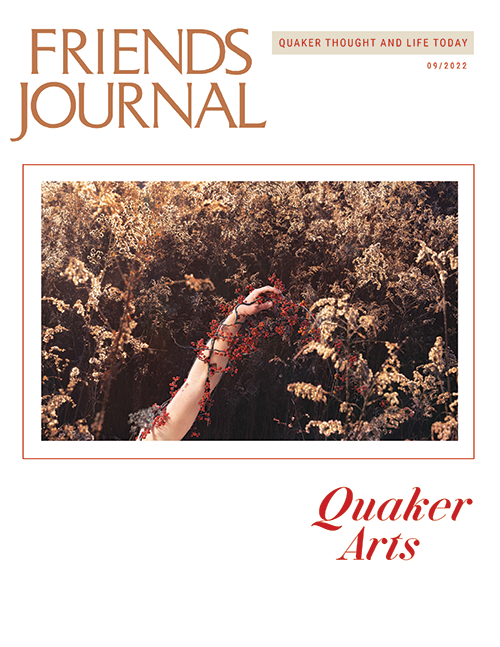Quakers have long cultivated an aesthetic of minimalism, having sought during their prominence in eighteenth-century colonial America to weed out superfluity and excess of all kinds. This involved a general prohibition on music, sports, painting, coat collars, alcohol consumption, theater, and fiction, as well as various boycotts of goods produced by slave labor, including cotton, sugar, and rum. Some of this exacting asceticism was driven by an impulse to remove what John Woolman described as the seeds of wars in these our possessions, and some of it was driven by a peculiar aesthetic. Even so, it was said that the finest silks imported into Philadelphia, Pennsylvania, were of the color gray, to appeal to Quaker buyers, who, having not much else to spend their money on, enjoyed fabrics that were not tainted by slave labor. Their decision to purchase high-quality luxury goods suggests that the peculiar Quaker aesthetic was not motivated by asceticism per se.
Quakers have long cultivated an aesthetic of minimalism, having sought during their prominence in eighteenth-century colonial America to weed out superfluity and excess of all kinds.
The Quaker aesthetic was grounded in a biblical sensibility that is largely lacking today. The biblical prohibition on graven images was a central theme in Reformation disputes between Protestants and Catholics in central Europe and between Puritans and Anglicans in England. Quakers adopted much of the culture of Puritans while rejecting key elements of Puritan theology, such as election and predestination. On cultural matters, Quakers and Puritans concurred in rejecting graven imagery in places of worship; elaborate decor; and the liturgical calendar, including the observance of Christmas. However, this practice was not primarily aesthetic; it reflected a particular understanding of biblical texts that were held in high esteem by both groups.
The central biblical prohibition against visual art is found in the second commandment, recorded in Exodus 20:4–6. From the Geneva translation, which would have been most readily accessible for English Puritans, comes the following:
Thou shalt make thee no graven image, neither any similitude of things that are in heaven above, neither that are in the earth beneath, nor that are in the waters under the earth.
Thou shalt not bow down to them, neither serve them: for I am the Lord thy God, a jealous God, visiting the iniquity of the fathers upon the children, upon the third generation and upon the fourth of them that hate me:
And showing mercy unto thousands to them that love me, and keep my commandments.
While an aversion to graven images recurs throughout the Hebrew Bible, the second commandment provides a detailed presentation of this peculiar Hebrew attitude. It is the longest commandment of the Ten Commandments, and it contains five separate components:
- You shall not construct graven images.
- You shall not bow down to them.
- Neither shall you serve them.
- There should be no representations of anything in sky, water, or on land.
- It contains a prophecy, for God’s favor will endure for a thousand human generations who observe this commandment. (Be aware that fewer than 200 generations have passed since the time of Moses.)
It should be immediately clear that our current society is completely at odds with the second commandment, no matter how many courthouses ostentatiously display the Ten Commandments. We are constantly deluged with images of living things—movie actors, sports teams, and animations—which fill magazine ads and computer, television, and movie screens. We would be hard-pressed to imagine life without them. Our largest cities would be economically devastated if we stopped constructing, serving, and bowing down to these visual images.

It is reasonable to ask whether the second commandment actually concerns these fixtures of modern life. At the bare minimum, it forbids the depiction of a deity and/or anything that might elicit worship. For the Puritans of the seventeenth century and the Calvinists of the sixteenth century, the commandment certainly applied to any visual representation of God, say in the Sistine Chapel or on a crucifix. Such representations were viewed as overt idolatry. Quakers appear to have accepted this position without much comment or elaboration, this dispute having been largely settled among English dissenters before the advent of the Quaker era.
However, the question for us today is whether the “similitude of things,” whether above or below, generates an attitude equivalent to worship. Does it captivate our attention? Does it demand our time, labor, and money, and does it lead us astray? If so, that would constitute the essence of idolatry. And I think that an impartial inquiry would discover that yes, modern movies, television, and photography produce a concentrated mental state akin to worship—albeit a misplaced worship—which (often) leads us astray.
The chief question we can reasonably ask, then, is whether this visual bombardment in the modern world is salutary or destructive. And it would be difficult to answer that question without experiencing the absence of visual images, whether they are considered art, advertising, pornography, or propaganda. This would require a commitment that few would undertake, but it is something that many Quakers of the past three-and-a-half centuries considered normal and something that they personally cultivated and often achieved.
Is it even possible, in this era, to be Quakers if our minds are filled with alluring images, stupendous special effects, captivating melodies, and artificial desires?
However, one contemporary approximation might be the condition of Eastern Europe circa 1990, when advertising was still at a minimum. Visitors there have noted their own calmness of attention in the absence of visual advertising. Visitors could observe and interact with people themselves when there was less “similitude” of people in print media. They often found that interactions were more personal and less hectic.
Does art provide compensatory value that outweighs the risks of idolatry and false worship? If so, other articles in this issue of Friends Journal will attest to them. Even so, we should consider whether early Quakers lacked art or whether their lack of art was itself an art form, which few are prepared to recognize and appreciate. If so, then by contrast, we are the ones whose lives are hampered, harried, and constrained due to the proliferation of visual imagery, which the biblical writers were exercised to prohibit. Is it even possible, in this era, to be Quakers if our minds are filled with alluring images, stupendous special effects, captivating melodies, and artificial desires? If we wish to preserve the Quaker heritage, we should search out the seeds of idolatry in these our fascinations, so that we can worship in Spirit and in Truth.




Keith, thank you for thinking so deeply and clearly about the biblical roots of the Quaker aesthetic. When I first encountered Friends over forty years ago, I quickly became aware of the sense in which an intentional concern for limiting esthetic stimulation was a spiritual practice described as the art of living. This approach, as I witnessed it in a large urban meeting, did not eschew beauty by any means. It tried to match form with function in a way that revealed what was authentic and true in objects and in life. In this way, the practice itself was an artform, as you suggest. The beauty of a life lived in careful discernment of the authentic spirit of truth as revealed by the Light remains a wonder. It is the art of living that Friends too often only acknowledge in memorial. This practice and its spiritual foundation need to be lifted up as an expression of the beauty of the Quaker way, one that continues to awe and inspire those who behold it.
Re: the absence of art, or the art of absence: I am a retired speech-language pathologist, and a musician as well. Once upon a time, I managed to complete a couple of studies comparing “language processing” to “music processing” in the human brain. However, my studies were just a few scratches on an extensive surface, and I greatly appreciate what others have been learning.
When considering the various art forms, it often helps me to reflect upon how language, spatial representation, and music are organized neurologically. So far, we have studied the organization of spoken and written language in the brain more thoroughly than we have studied visual representation in the brain, e.g. drawing, painting or sculpture. We also have much more to learn about how our brains behave when we sing or when we play musical instruments.
We have evidence that early humans, and some of their predecessors, expressed themselves visually and symbolically for thousands of years. A flute has been found, about 35,000 years old, that someone made from a vulture’s bone. The oldest known cave painting is about 64,000 years old. It was made by a Neanderthal who traced her or his own hand. However, the oldest known writing system, cuneiform, dates back “only” to about 3400 BC, in Mesopotamia.
We often use the arts to express what we cannot say. Our spiritual experiences are often “beyond words.” For us contemporary humans, the visual and perorming arts, music, verbal expression, and spirituality seem intertwined. Perhaps the same was also true for our long succession of predecessors. There may indeed be an “art of absence,” but whenever there has been an “absence of art,” we have had a knack for re-kindling its presence.
I live in Barbados and for ages it seems the statue of Horatio Nelson became the object of hatred of those so-called haters of imperialism and colonialization the same type of uncontrolled hatred we saw with the BLM protests and the tearing down of monuments in various countries.
I realized that prior to 1813 when the statue was erected, there were no other statues or ornate memorials to any person, foreign or local and that it was so because of the huge Quaker influence on 17th and 18th century Barbados and the aversion to graven images. It was the second such statue of Nelson to have been erected after the Battle of Trafalgar in 1805, the first one being in Montreal of all places.
Both were erected before Nelson’s column in London. A few years ago, Government took down the statue.
However, by then the Government had named national heroes and was in the process of erecting statues, several of which exist. I suggested all statues should be taken down as they were all graven images and that I had no problem with the removal of Nelson’s statue, once it was on the basis of the second commandment.
Quakerism had almost completely died out in Barbados by the beginning of the 19th century. You can see the physical difference if you look, and you know at what you are looking. However, many Barbadian Anglicans retained many of the principles of their Quaker ancestors which have more or less disappeared now.
As a practicing artist, working in the field of photography, I think this article is fundamentally wrong. Yes we are bombarded by ever more sensational images on social media, but, thank heavens, there are other venues where great art may still be seen. Most of the images we see (and I have data on this) are not art. How many cats and puppies do we need to see?
Speaking only to my own work, my last three projects will tell you where I’m parked as an artist.
1. Hard time for these times. 2017, a series of architectural photographs intended to convey the post industrial angst that afflicted most of the swath of country between Ohio and New Hampshire.
2. Faces of Addiction. 50 portraits and life-stories of addicted persons. This projected helped many of the subjects because I listened to them without judgment. And it helped many thousands of people to see the addicted first as individuals. It opened doors of fairness and of hope. 2018-2020.
3. Glaciers in Retreat, opening in Cincinnati on 9/24, with another showing booked for next year. Pictures describing the melting of glaciers, another spur to conscience about the global catastrophe already arriving. These photos are majestic and sad. Perhaps they’ll stir a few more people to action.
None of this work represents any kind of graven image, nor any kind on non-christian, pre-christian, or just plain heathen god. It is work which is beautiful, intended to be seen in person and not on screens (which causes me a problem or two).
If Mr. Barton thinks this work is detracting from the Quaker mission, or promoting a false god, he should certainly re-think his position.
PS — Most Quakers believe in continuing revelation. Does Mr. Barton?
The author responds briefly:
I am enormously grateful for the published responses to my article, Art of Absence. In many ways they are more interesting than the article itself. Due to pressing personal matters, my comments today will be brief to the point of sounding telegraphic. Perhaps I can elaborate in the near future.
Eric Hatch raises important points, and I appreciate that he wants to push back some, in the defense of art. I expected more replies along those lines, and Eric makes valid points. A few ideas here:
Continuing revelation (CR): Of course this is a standard article of Quaker f&p. However, to qualify as CR, a topic must actually be discussed in a meeting for business. Instead, what we have today is a wholesale slide into modernity with an (largely) unexamined adoption of video/movie/TV culture. I even hear sermons that make overt references to movies — and movies of dubious value at that. Whatever it is, it has not been conducted as a process of CR.
I would make a distinction between photography for the sake of art and for the sake of documentation. It’s one thing to make a Spielberg movie or a Michelangelo sculpture and another to document the condition of a wound or property damage. What Eric describes seems to me to be more in the realm of documentation than art. This is not to say that documentation cannot create a powerful response. I am glad it has done so in his hands.
The role of the Bible: Is something true because it is in the Bible? Or is it in the Bible because it is true? Obviously, there are many things in the Bible that are invalid (or perhaps no longer valid), but there are some concepts that can be found no where except in the Bible. Among the latter are the (astonishing) self-revelation of God to Moses in Ex. 3 and 4, and the peculiar Hebrew attitude toward graven images in Ex. 20:4-6. To ignore these central insights, which are reiterated throughout the Hebrew scriptures, would imply that the Bible has little value at all.
Finally the RSF: Quakers have relinquished almost all of the historically distinctive features of dress, speech, and self-restraint. What is left of the RSF if the only thing left holding it together is liturgical silence? The sound of one hand clapping?
During the worst days of Covid I had time to create some Quaker music. My inspiration was a wonderful married couple at our meeting in Orlando, Liz and Ray Jenkins. Liz was our wonderful clerk, and Ray was a prominent contributor to our meeting’s activities. To me, Liz and Ray were modern counterparts of George Fox and Margaret Fell (Fox). My project became a music video dedicated to Liz and Ray. I titled it “The George and Margaret Suite.” In seven scenes, it traces the couple’s relationship over nearly two decades. The Suite can be seen at https://youtu.be/D5S26SCM2y8.
I am enjoying this discussion, in part because I am challenged by the very narrow representation of both ‘art’ and ‘Quaker’ in Keith’s initial article. It is very easy to interpret one historical era in terms of another to then find one of them lacking. This misses the role of a creativity in Quaker history, community, and self-expression. I note Quakers are historically very strong in written representations of their spirituality (and of the divine in particular), and many have been famous artists per se, and many have been creative in other ways. I also note there is no discussion of art as a discipline in its own right. I would be useful to scope, for example, the role of spirituality in contemporary art. This might being us to quite a different view of art in relation to the commandment.